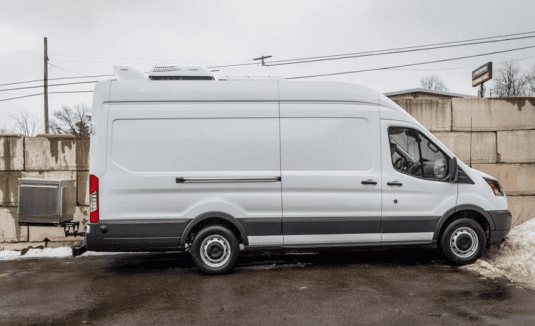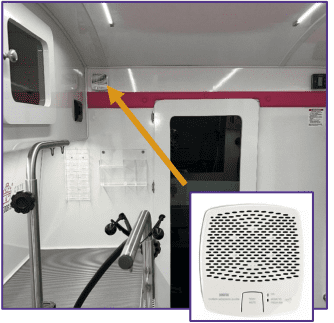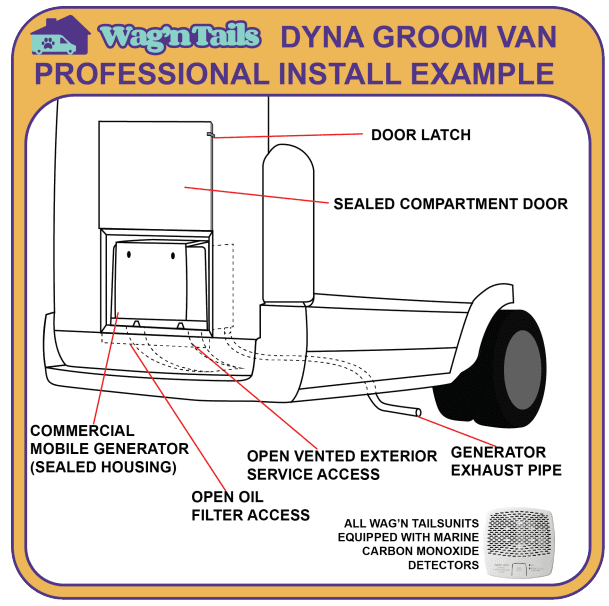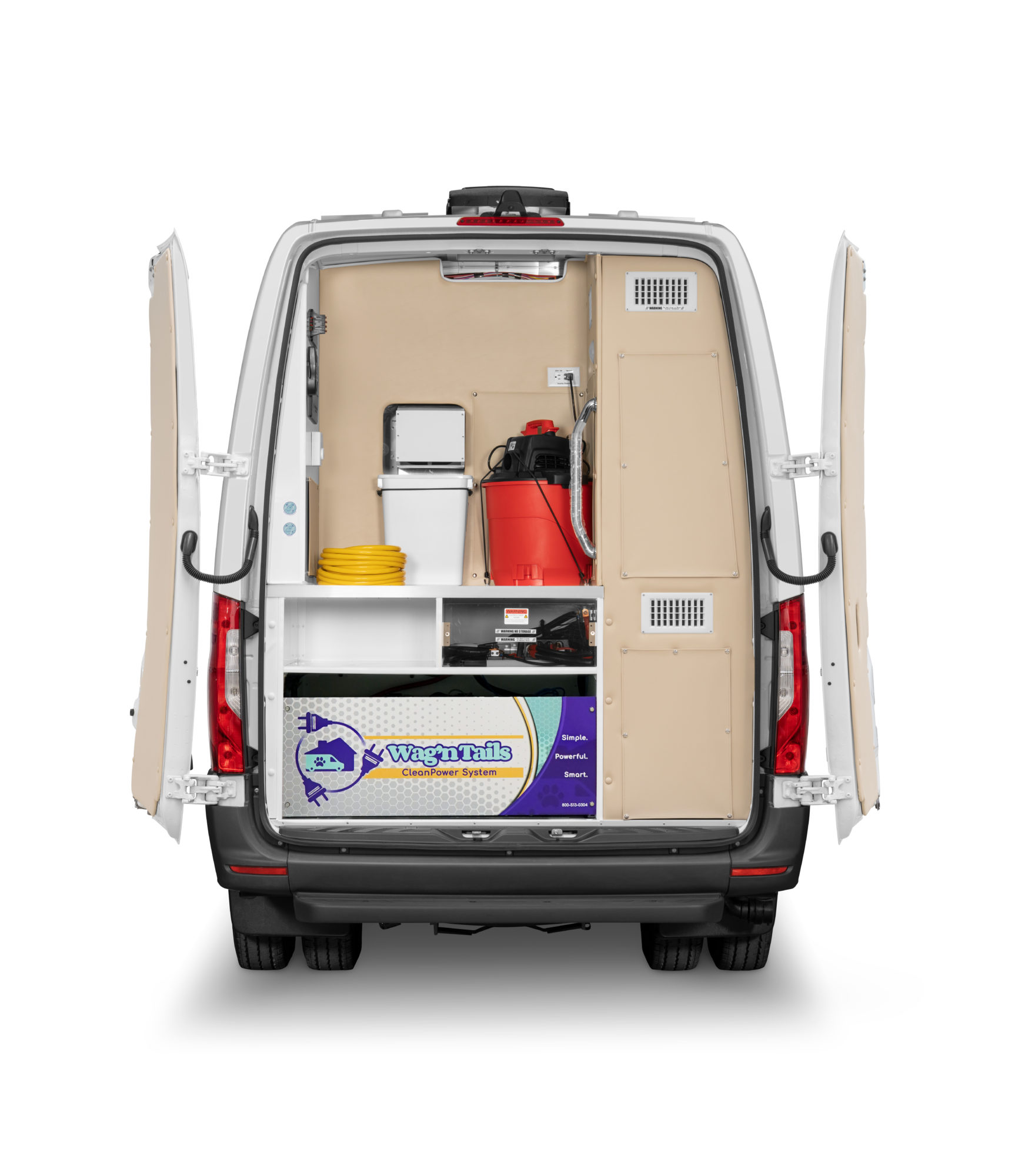Power Supply Operation Safety
Uncategorized
|4 min read

Because of some incidents in the mobile pet grooming industry caused by the use of portable generators in home built vehicles, we received calls from Wag’n Tails customers with concerns regarding carbon monoxide. The purpose of this article is to share valuable information and address safety concerns about the use of portable generators and the difference between a professionally installed commercial mobile generator.
Primary types of generators to power your mobile grooming vehicle:
Portable Generators:
The pandemic created a great deal of supply shortages in our country. Generators and parts were no exception. As a result, some mobile pet groomers resorted to the use of portable generators to power their conversions because of the ease of availability and lower cost. Portable generators are certainly an alternative to a professionally installed commercial mobile generator, but some safety measures must be taken to avoid disaster. Unfortunately, we have seen a few incidents in our industry that have been caused by portable generators being used improperly. Here are the recommendations for using portable generators:
- Always mount the portable generator outside your vehicle. Never operate a portable generator inside your vehicle or with your rear vehicle doors open. This is a recipe for disaster because carbon monoxide fumes can be deadly. Portable generators are made to be operated outside away from open windows and open doors. Below is an example of a trailer hitch portable generator mount.

- Do not store gas cans inside your vehicle. If the gas can develops a leak or is not perfectly airtight, the vapors from gasoline, which are extremely flammable, WILL escape. Especially, in an enclosed area.
- Purchase a high-quality MARINE carbon monoxide detector. Not all carbon monoxide detectors are created equal! Less expensive carbon monoxide detectors sold at the big box stores are affected by excessive humidity, like the humidity that is created by a high velocity dryer and a wet dog. This creates a false positive for CO detectors when the humidity in your mobile unit reaches high levels. This is why most manufacturers of regular home-use CO detectors recommend mounting the alarm away from bathrooms, showers or any other area in your home with moist or humid conditions. Unfortunately, humidity is unavoidable in a mobile pet grooming vehicle.
The good news is that there is an effective CO detector that is made for the humid environment of a mobile grooming vehicle. We recommend a specific type of Marine CO detector called the FIREBOY-XINTEX–Battery Operated Marine Carbon Monoxide Detector Model CMD6-MD-R. To gain UL approval for marine use, this detector must perform well during rigorous testing that is designed to mimic a harsh marine environment, which includes dramatic changes in temperature and humidity, like a mobile grooming vehicle. We have thoroughly tested this CO detector and have not received a false positive due to humidity. This marine grade CO detector is a standard on all of our Wag’n Tails conversions. This Marine CO detector is also available for sale on the Wag’n Tails parts store and very easy to install.

Wag’n Tails Commercial Mobile Generators:
Commercial mobile generators have been installed safely in ambulances, emergency vehicles and millions of recreational vehicles in operation for decades. Meeting certifications and standards such as RVIA (Recreational Vehicle Industry Association) standards are critical for safety from carbon monoxide. Here are a few requirements that are important to ensure your safety from carbon monoxide:
- Have your commercial mobile generator installed by an expert generator technician that adheres to RVIA certification standards. All Wag’n Tails generators are installed by Cummins Onan Certified technicians. Our installations are approved by Cummins Onan Corporate Application Engineers for proper ventilation and operation.
- The commercial mobile generator must be exhausted outside the vehicle, like the exterior exhaust pipe on your primary vehicle. (See image below).
- The commercial mobile generator must be mounted in a sealed compartment, in addition to the generator housing. The sealed compartment must be vented to the exterior of the van. (See image below).

In summary, safety is and will always be Wag’n Tails #1 priority when designing, engineering, and manufacturing our Wag’n Tails vehicles. We can proudly stand behind our track record for the past 30 years. We have approximately 6,000 vehicles on the road, and we have never had a significant safety issue. For more information about our Wag’n Tails safety standards, click here.
Wag’n Tails CleanPower System™ Alternative:
If you are wanting to avoid the generator altogether, a better solution for you may be the Wag’n Tails CleanPower System™. The CleanPower System is easy to use, you simply plug it in at night – and that’s it! The CleanPower System will last for years. No idling required! On average, customers that switch from a generator to a CleanPower System save $6,000 on maintenance costs in their first full year of operation.

If you have any questions about our safety standards, generators, or the CleanPower System, give us a call at 800-513-0304 or email sales@wagntails.com.
Jason Mills



